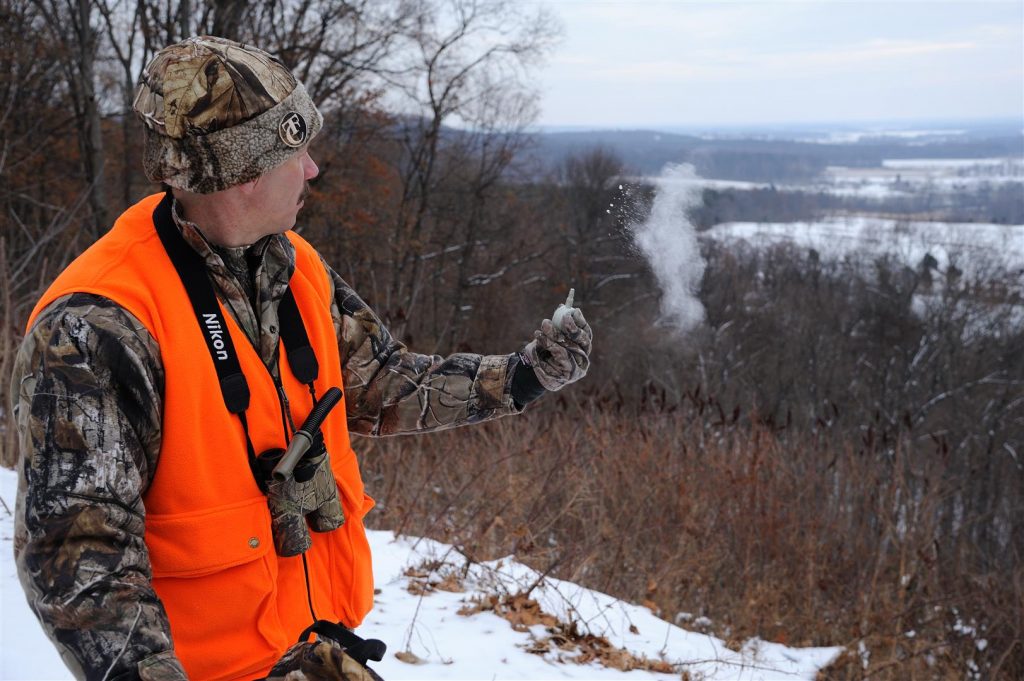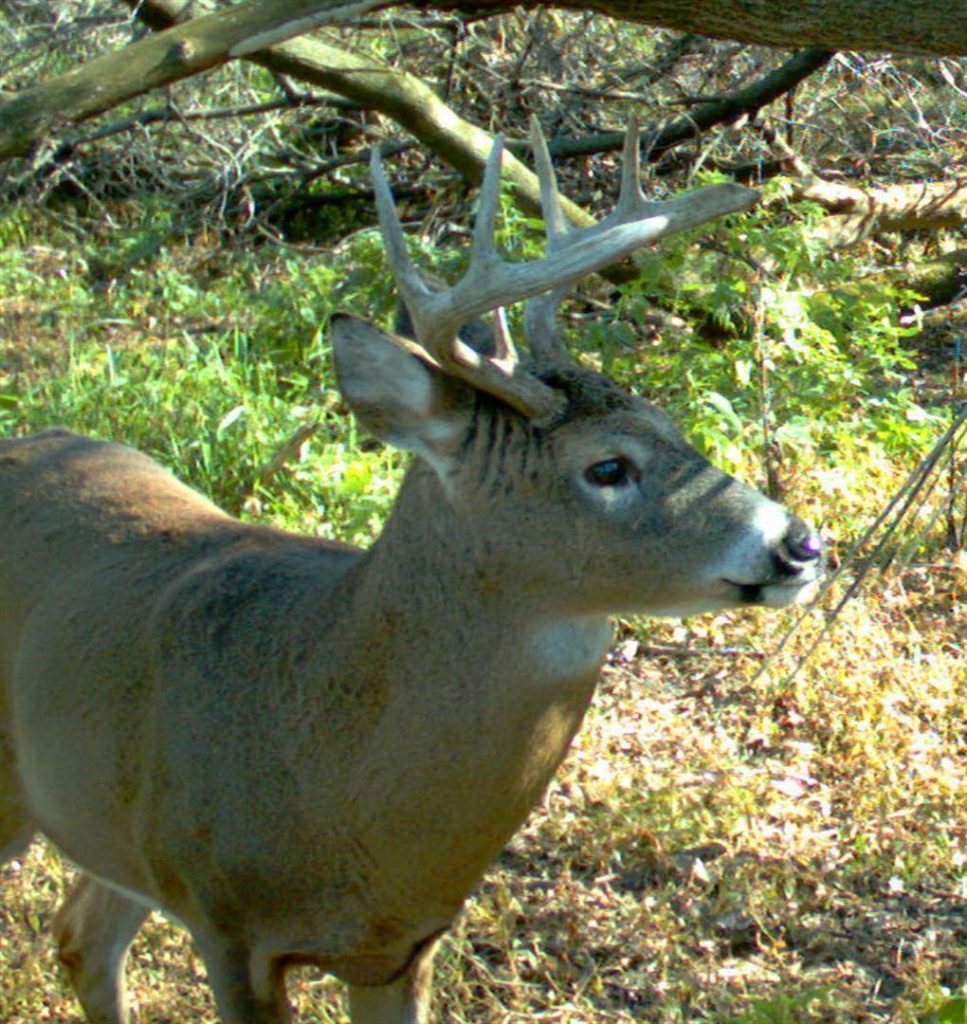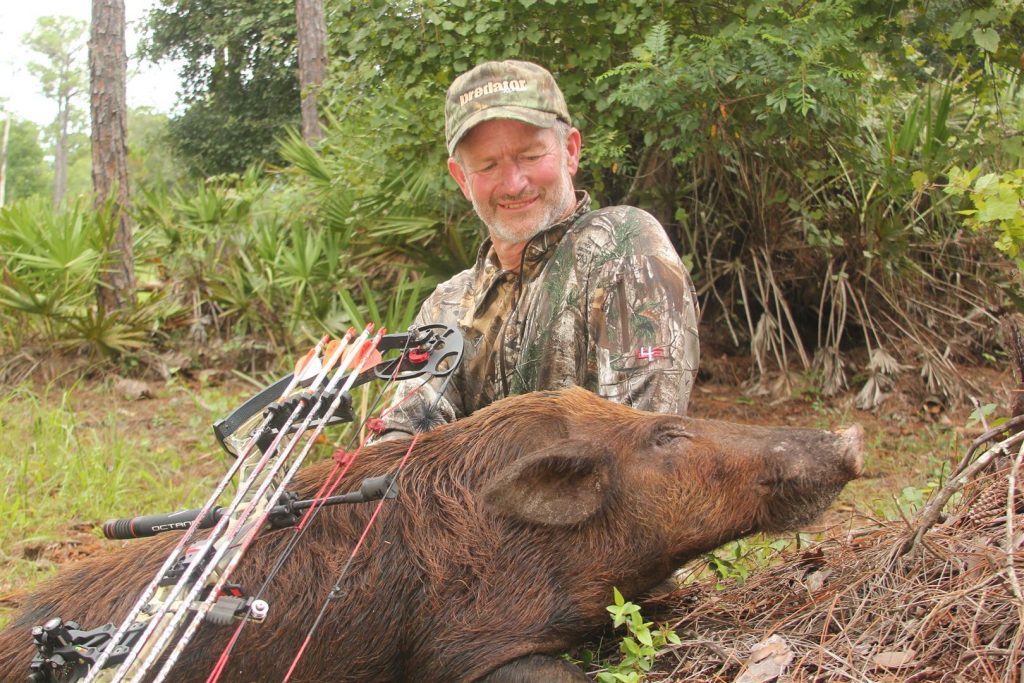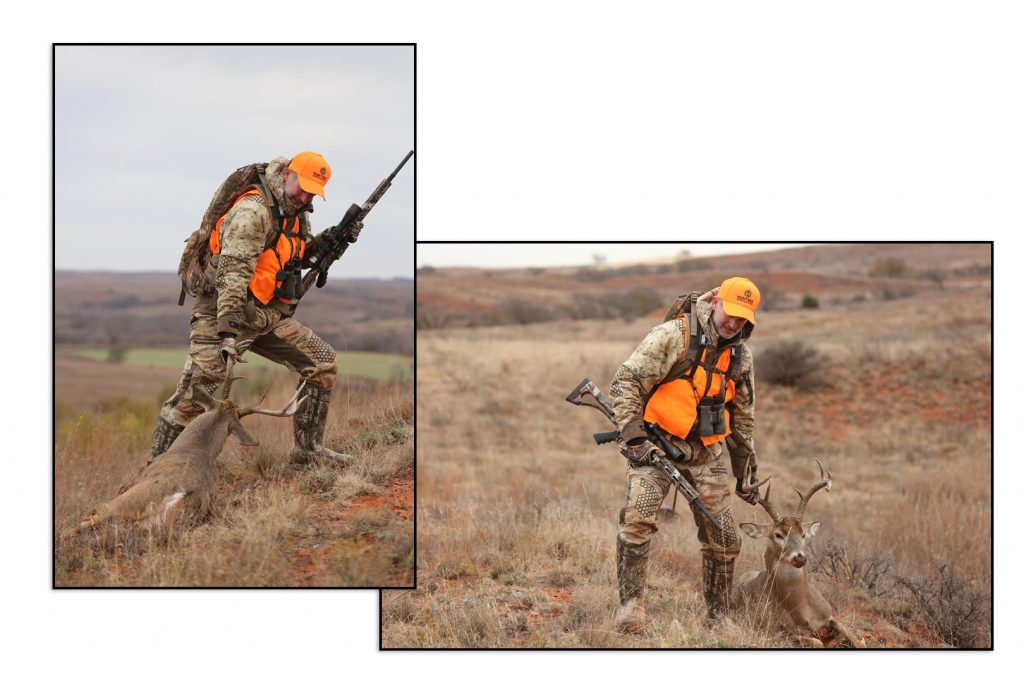
The Big-Game Drive—A Group Effort That Yields Success
While most big-game hunting is somewhat passive, meaning that once you get into position you spend most of your time looking for game or waiting on stand for animals to walk past, there are times when a more aggressive approach is called for. When the game isn’t moving for an extended period of time—something that often happens due to excessive hunting pressure and unexpected weather changes—hunters can find success by diving into thick-cover bedding areas and drive the quarry out.
Drives can be an exciting and productive way to put meat in the pot—if they are organized, follow a precise game plan and are extremely safety conscious. Here’s how a drive works.
“Standers” are posted on the outskirts of a designated tract of land where the game is anticipated to move, while “drivers” move towards the standers, pushing game out in front and to the sides of their line of march. The standers are the most likely to get shots, but it is not unusual for the drivers to catch an old wary buck or bull trying to sneak back through them and get some shooting, too, if they are permitted to carry firearms; depending on the terrain and drive organization, drivers are often unarmed to up the safety quotient.
Sounds simple, right? But there’s much more to a drive than this. First, a drive must be well organized. Generally speaking, there is one hunter in charge, often called the “Drive Master,” chosen for their knowledge of the land being hunted and the game being pursued. Ideally, that person also has some experience in driving game, and more importantly, they understand the importance of safety and set the ground rules to ensure that.

Before initiating the drive, the Drive Maser will factor wind direction into the equation. Often you want the wind at the back of the drivers and in the face of the standers.
Safety First and Foremost
The basic safety rules of a big-game drive are as follows:
- All drive participants must wear blaze orange vests, jackets and/or hats, even if not required by law.
- Only very experienced drivers should be allowed to carry a firearm to help minimize the chance of a shooting accident.
- All drive participants need to see on a map showing where all the standers will be located and the basic routes the drivers will walk as they move toward the standers.
- When the drive is underway, the drivers should walk parallel to each other, and each will keep the driver on each side of them in sight.
- If they carry firearms, the drivers should take a shot only if the animal has passed behind them, so there can be no chance of an accident.
- Standers never load their firearms until they are in position on stand, and their firearms should be unloaded before they leave their position. Also, standers should never leave their stand until their pickup ride arrives, even if they shot a deer, elk or other quarry that has run off. That animal can always be tracked later, and remaining on stand in the position known to all others in the hunt until the drive concludes is critical to the safety of everyone.
The Drive Master’s Role
In addition to planning the drive, it is the Drive Master’s job to carefully explain everything about what is about to happen to every participant so there are no misunderstandings regarding how the hunt will proceed. This information includes the basic route of the drive, where each stander will be located, and exactly what time the drive will begin. Looking at a topographical map of the area or viewing it on Google Earth is important to coordinating this information with all drive participants.
Because the Drive Master is familiar with local game behavior, he or she knows through experience which way driven game is likely to run once the drive begins and shots are fired. The Drive Master decides who will stand and who will drive and where each will take their positions. He or she controls when the drive will start and when it will end. I view a Drive Master as a sort of Master Sergeant, whose orders are not to be disregarded.
The Standers’ Bible
Both the size of the landmass being hunted and the number of people involved in the drive will dictate how much distance there is between standers. A quality stand post offers some concealment, but also enough visibility that standers can see approaching game before it is on top of them.
Standers are moved into position as sneakily as possible. This often involves having a vehicle dropping them off many miles outside the hunt zone before circling back. Once in position, the standers must remain quiet and move as little as possible. Standers usually are experienced hunters who have shot game before or, if they’re inexperienced, they will have an experienced hunter standing with them and advising on shots. When settled in, standers should assess the terrain and try and anticipate where the game will be coming from so they can position themselves accordingly. They should also know to never take a shot unless the animal has been positively identified and that there are no hunters in front or in back of the target animal. Again, you can see why blaze orange worn by every drive participant is critical here.

“Soft” drives encourage deer to move cautiously, not flee at breakneck speed. This gives standers better shot opportunities and diminishes the need for shots on running game.
Most of the time, standers find themselves on the ground, hunkered up against a big tree or in a brush pile. However, I have found that putting standers up in elevated tree stands can give them a much better view of the terrain and the ability to spot game coming their way faster than if they were on the ground. It also makes them much harder for the game to spot the standers. This isn’t always feasible, but when it is it’s a good option.
Driving Tips
In small land blocks, brushy river bottoms that cut through agriculture or sagebrush country or with a smaller party, as few as two drivers can conduct a drive hunt. On larger land mass areas, more drivers are needed. My experience has always been that the fewer people involved on the drive end, the easier it is to control things and have it work according to plan. Conversely, it’s hard to have too many standers.
It is critical that the drivers do not begin their work until the designated time, so that they know for certain that all standers are in place and ready to go. They should walk abreast of each other and each should stay in the sight of the drivers to their immediate right and left. Their pace should be slow but steady; it is faster than still-hunting, but not as fast a walking down the street.
Back in the old days, when dogs were a common drive participant (using dogs for driving deer is illegal today in all but a handful of states), the drivers intentionally made a lot of noise, often banging pots & pans and talking or shouting loudly. This led to panicked deer running as fast as they could go. For that reason, today most Drive Masters prefer their drivers to walk slowly and relatively quietly, believing this doesn’t send the animals off in total panic, but instead may just softly push them towards the standers. More times than not the game will then move with a purpose, but often slow down and check their back trail, which affords better shot opportunities and discourages shots on running game.

Wild hogs—animals that love to live in thick, nasty places—are very conducive to a well-organized drive.
In most cases, drivers are not carrying firearms. In those cases where the terrain and organization do allow for the safe carry of firearms by drivers, they will do so, again moving quietly as they push, because more mature deer and other big game have learned through the years that their best chance for survival around hunters is not to run, but instead hunker down and hide. These animals may then try and slip back through and behind the drivers, who then have a chance at a good and safe shot.
Conclusion
Decades ago, driving big game was much more commonplace than it is today. It was often a way, especially with whitetail deer, for rural communities to fill the freezers of many so that there was meat for everyone for the coming winter. While those raucous, old-fashioned drives still serve that duty, especially in the South where dogs are still a part of the hunt today, most modern hunters mostly view a drive as a technique of last resort, a sort of Hail Mary to try on a long hunt’s last day when there is nothing to lose. The disadvantage of a drive for big game is that, once it’s done, it often takes several days and sometimes longer for the area to return to a semi-normal state that can then be hunted again successfully by more conventional methods. That’s why small drives with two to three drivers and three to four standers, conducted quietly and softly, are the choice of many, who understand this and work to keep the inherent disruption minimal.

Decades ago, driving big game was much more commonplace, especially with whitetail deer, filling the freezers of many for the coming winter.
*-*-*-*-*-
Bob Robb is one of the most well-respected voices in outdoor media, with more than 40 years of columns and essays in print recounting his exploits in the field. A renowned archery expert, Robb has hunted on five continents and also lived 15 years in Alaska, where he held an assistant hunting guide’s license. His work has appeared in titles small and large, from American Hunter and American Rifleman to Whitetail Journal, Field & Stream, Petersen’s Hunting, Deer & Deer Hunting, and many others. He recently retired as Editorial Director from Grand View Media Group, where he oversaw the content for eight publications, including Bowhunting World, Predator Xtreme and Waterfowl & Retriever. Still, retirement is rather an ugly word to Robb, and so he continues to contribute to a variety of publications, just as he continues to hunt around the world.
















